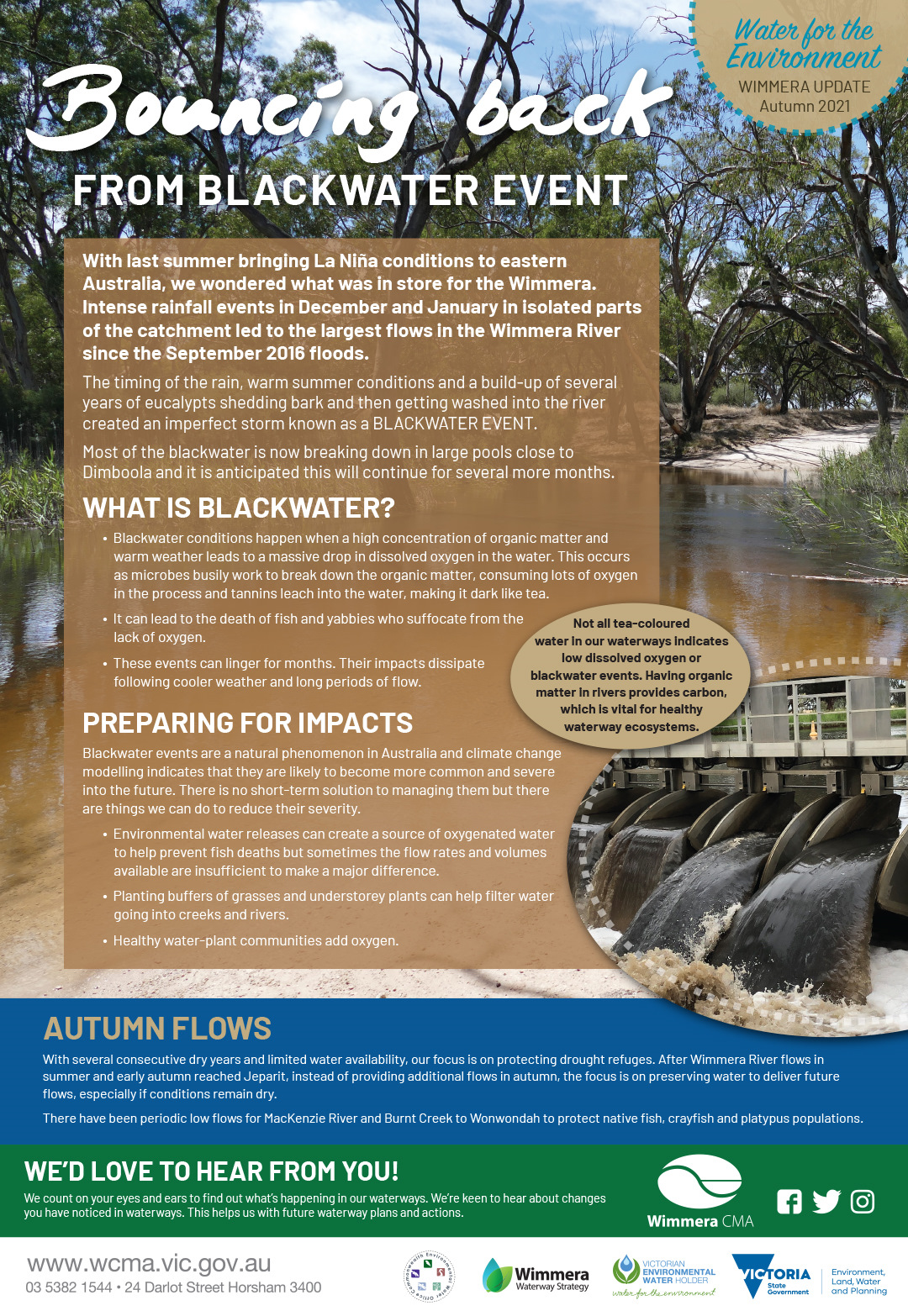With last summer bring La Niña conditions to eastern Australia, we wondered what was in store for the Wimmera. Intense rainfall events in December and January in isolated parts of the catchment led to the largest flows in the Wimmera River since the September 2016 floods.
A text-copy of the update is available below the image for easy reading.

The timing of the rain, warm summer conditions and a build-up of several years of eucalypts shedding bark and then getting washed into the river created an imperfect storm as a BLACKWATER EVENT.
Most of the blackwater is now breaking down in large pools close to Dimboola and it is anticipated this will continue for several more months.
WHAT IS BLACKWATER?
- Blackwater conditions happen with a high concentration of organic matter and warm weather leads to a massive drop in dissolved oxygen in the water. This occurs as microbes busily work to break down the organic matter, consuming lots of oxygen in the process and tannins leach into the water, marking it dark like tea.
- It can lead to the death of fish and yabbies who suffocate from the lack of oxygen.
- These events can linger for months. Their impacts dissipate following cooler weather and long periods of flow.
Not all tea-coloured water in our waterways indicates low dissolved oxygen or blackwater events. Having organic matter in rivers provides carbon, which is vital for healthy waterway ecosystems.
PREPARING FOR IMPACTS
Blackwater events are a natural phenomenon in Australia and climate change modelling indicates that they are likely to become more common and severe into the future. There is no short-term solution to managing them but there are things we can do to reduce their severity.
- Environmental water releases can create a source of oxygenated water to help prevent fish deaths but sometimes the flow rates and volumes available are insufficient to make a major difference.
- Planting buffers of grasses and understorey plants can help filter water going into creeks and rivers.
- Healthy water-plant communities add oxygen.
AUTUMN FLOWS
With several consecutive dry years and limited water availability, our focus is on protecting drought refuges. After Wimmera River flows in summer and early autumn reached Jeparit, instead of providing additional flows in autumn, the focus is on preserving water to deliver future flows, especially is conditions remain dry.
There have been periodic low flows for MacKenzie River and Burnt Creek to Wonwondah to protect native fish, crayfish and platypus populations.
WE’D LOVE TO HEAR FROM YOU!
We count on your eyes and ears to find out what’s happening in our waterways. We’re keen to hear about changes you have noticed in waterways. This helps us with future waterway plans and actions.
Wimmera Catchment Management Authority
www.wcma.vic.gov.au | 03 5382 1544 | 24 Darlot Street, Horsham 3400
|






